Telehealth Newsletter
Official Newsletter of Telemedicine Society of India

What is New?
With this edition of the newsletter we shall try and simplify some of the terminologies and the language used for AI. This guide intends to bridge the knowledge gap for those curious about AI’s workings and its impact on the future.
Mr. D. Satheesh Kumar discusses the formation and activities of the Tamil Nadu Chapter of the Telemedicine Society of India (TNTSI). He recounts the chapter’s inception in 2015, its official inauguration in 2016, and subsequent efforts to promote telemedicine among healthcare professionals and engineering students. A significant focus is placed on the integration of medical devices with telemedicine and the application of AI and Machine Learning in the medical field, highlighted by a recent telemedicine conference hosted for students and faculty of the RMK College of Engineering and Technology.
The final segment, contributed by Dr. Vikrant Mittal and Ms. Swati, delves into telepsychology and telepsychotherapy. This part underscores the growth of digital communication technologies in psychotherapy, addressing the technological, social, and economic barriers to mental health services and how telepsychology offers solutions. It chronicles the history of telepsychology services in India, with specific reference to the efforts of SCARF post the 2004 tsunami.
Overall, the newsletter highlights the transformative potential of AI and telemedicine across various healthcare domains, showcasing efforts to educate, innovate, and improve access to care through technology.
Thank You
Dr. Sunil Shroff
Chief Editor
Vice President, TSI
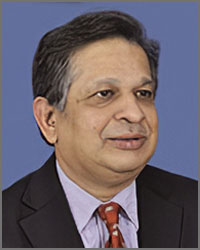
Decoding AI: Understanding the Language of the Future
Dr. Sunil Shroff
Vice President, Telemedicine Society of India | Consultant Urologist & Transplant Surgeon
Artificial Intelligence (AI) is revolutionizing the way we live, work, and interact with the world. From voice-activated assistants to self-driving cars, AI technologies are increasingly becoming a part of our daily lives. But as AI becomes more prevalent, so does the jargon surrounding it. To bridge the gap between complex AI concepts and everyday understanding, here’s a guide to some of the most common AI terms. This list will help demystify the language of AI, making it more accessible to everyone curious about how these technologies work and their impact on our future.
AI Terms
1. Artificial Intelligence (AI): AI is like a computer brain that can think, learn, and make decisions similar to humans. It can solve problems, recognize speech, and even drive cars without human help.
2. Machine Learning (ML): A subset of AI, machine learning is when computers learn from data without being explicitly programmed. It’s like teaching a computer to improve at a task by learning from its mistakes and successes.
3. Deep Learning: This is a more advanced type of machine learning involving neural networks with many layers. It’s akin to teaching a computer to think and understand the world in a way that mimics the human brain.
4. Neural Network: Inspired by the human brain, a neural network is a series of algorithms that tries to recognize underlying relationships in a set of data through a process that mimics the way the human brain operates.
5. Natural Language Processing (NLP): This technology helps computers understand, interpret, and respond to human language in a valuable way. It’s what powers chatbots and virtual assistants to understand and reply to your questions.
6. Algorithm: In AI, an algorithm is a set of rules or instructions given to an AI system to help it learn from data. It’s like a recipe that the computer follows to make decisions or predictions.
7. Data Mining: This process involves exploring and analyzing large blocks of information to glean meaningful patterns, trends, and relationships. It’s like sifting through a mountain of data to find valuable nuggets of information.
8. Supervised Learning: A type of machine learning where the computer is taught using data that is already labeled. It’s similar to learning with a teacher who provides you with the correct answers for study examples.
9. Unsupervised Learning: Unlike supervised learning, unsupervised learning involves training a machine using information that is neither classified nor labeled. The machine tries to identify patterns and relationships in the data on its own, like learning without a teacher to guide you.
10. Token: In the context of AI, especially in natural language processing, a token is typically a word or piece of text that the machine uses to understand and generate language. It’s like breaking down a sentence into individual pieces to better understand its meaning.

Inception of TSI, Tamilnadu Chapter and Creating Awareness amongst Engineering Students
Mr. D. Satheesh Kumar
Honorary Secretary–TSI, Tamilnadu Chapter
The genesis of the Tamil Nadu Chapter of the Telemedicine Society of India (TNTSI) can be traced back to mid-2015 under the vice-presidency of Dr. K. Selvakumar. The inaugural meeting took place on August 2, 2015, at the Telemedicine Centre, Sri Ramachandra University, Chennai, setting the stage for the chapter’s formation. Following a series of discussions both online and in person, it was decided that the official launch would occur in early 2016.
Thus, on February 23, 2016, the TNTSI was officially inaugurated at the Government General Hospital in Neyveli, over 200 kilometers from Chennai. This significant event was presided over by the then TSI President, Dr. Biswa Narayan Mohanty, and witnessed by past presidents Dr. L. S. Satyamurthy and Dr. K. Ganapathy. The inauguration was marked by a special Continuing Medical Education (CME) program, exclusively for over 70 doctors from GH-NLC, with additional invitations extended to doctors from nearby Indian Medical Association chapters.
With Dr. K. Selvakumar at the helm, TNTSI embarked on an active campaign to promote telemedicine across hospitals and to raise awareness among engineering students, recognizing their pivotal role in developing medical devices for telemedicine integration. Despite challenges posed by the COVID-19 pandemic, which prohibited gatherings, TNTSI, under the guidance of Dr. Sunil Shroff, successfully conducted the TELEMEDICON-2020 entirely online, showcasing resilience and adaptability in the face of adversity.
TNTSI’s commitment to expanding its membership base has been vigorous, with over 100 life members and 20 institutional and corporate members from Tamil Nadu.
In its latest endeavor, TNTSI hosted a telemedicine conference at RMK College of Engineering and Technology, Chennai, on March 20, 2024. The event featured six speakers, both in person and online, addressing over 150 students and 20 faculty members from the Department of Electronics & Communication Engineering, along with online participants. The conference spotlighted the integration of medical devices with telemedicine and the emerging roles of AI and Machine Learning in the medical sector, sparking insightful discussions among participants.
As TNTSI continues its journey, it remains dedicated to advancing telemedicine and fostering innovation through education, collaboration, and technological integration.
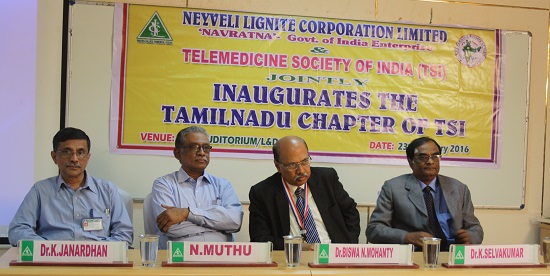
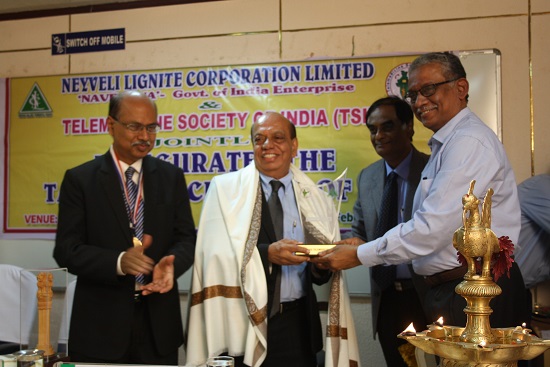
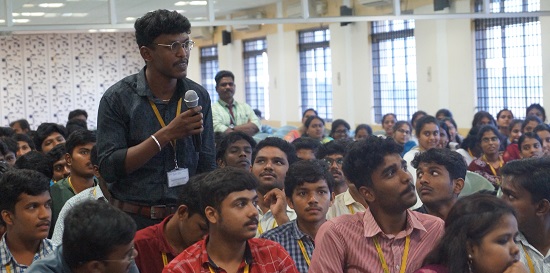
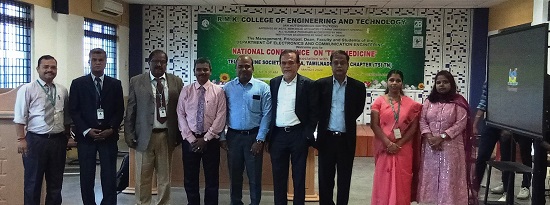
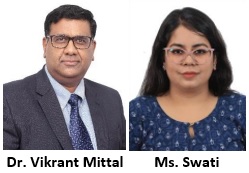
Moving Towards a New Era in Telepsychology/ Telepsychotherapy
Dr. Vikrant Mittal
MBBS, MD (Psychiatry, Yale),
MHA (Johns Hopkins), FACHE, FAPA
Ms. Swati
BA, MA, MPhil (Psychology),
PhD (candidate)
The use of digital communication technologies in psychotherapy has grown, with telepsychology being particularly significant in daily practice. The social perception, application, and demographic profile of telepsychology users, however, have not received enough attention.
The technological advancement of health care delivery and the rise in consumer expectations make it imperative for psychologists to employ new tools and systems in an ethical and effective manner to improve practice, research, teaching, training, and policy. It calls on psychologists to enhance their technical skills, modify conventional psychological services, and use technology to assist clients who live far away.
While some argue that the use of computers as a vehicle for therapeutic transmission may be a novel approach, the theory and practice of non-face-to-face methods of therapy have occurred for decades, including the use of letters and telephone calls (Haas et al., 1996, Padach, 1984). For example, published correspondences indicated that Sigmund Freud utilized letters to provide therapeutic consultation (Freud, 1909) with posthumous articles suggesting that he used letters as an active, indirect mode of communication with his patients.
History of Telepsychology in India
When visiting a healthcare provider, family members of individuals suffering from any illness or condition often experience significant worry. Anxiety begins with scheduling an in-person appointment; it also extends to locating and purchasing prescription medications or going to additional counselling sessions. The history of telepsychological services in India is decades old.
Serving the mental health community since 1984, SCARF is a not for profit organization that offers high-quality treatment and rehabilitation programs. Immediately following the 2004 tsunami disaster, SCARF launched community clinics in the coastal districts of Cuddalore and Nagapattinam in Tamil Nadu, as part of its first community telepsychiatry effort. The goal was to provide disaster management through psychosocial support and counselling to the victims and their families, with funding from the South Asian Total Health Initiative (SATHI), Bengaluru, and the Oxfam trust. SCARF had to supply the gear in order to implement the service, but ISRO, the Indian Space Research Organization, provided technical support in the form of a partnership that provided free hardware and connection.
Obstacles and Opportunities
Consequently, options that are not possible with in-person services are also provided by telepsychology.
- Geographic barriers: Due to health inequities, physical accessibility issues, and information deficiencies, mental health agencies have found it difficult to provide mental health treatments in rural areas. With the client receiving basic technology training about security, confidentiality, and protocol for access and data management, videoconferencing is now feasible with basic technology access.
- Financial/Lower Socio-economic status: Individuals face various obstacles, one of them being financial constraints. When organizations scale services, this should be kept in mind from the patient’s perspective of cost.
- Social isolation: Utilizing telepsychology, people can make a commitment to a progressive reintegration into their social and professional communities This can be achieved by utilizing telepsychology that allows them clinical care in their comfort zones.
- Attitudinal barriers: Many people do not seek the treatment they require because of fears of shame, contempt, cultural beliefs, family bias, and stereotyping in society. Population may be reluctant to seek assistance. Privacy and protection from outside criticism sources, stereotyping and interactions with people regarding services are provided by telepsychology.
- Transportation: Transportation hurdles usually consist of high expenses, unreasonable time requirements, or lack of availability. Beyond the cost of the service, financial obstacles might significantly impact the expense of transportation, the time lost from work to get to and from the session would be another factor.
- Physical Limitations: The appropriateness of telepractice must be carefully considered by clinicians, especially for patients with speech or hearing impairments, language barriers, and cognitive impairments that may exacerbate issues with emergency response, technological proficiency, and confidentiality limits.
Other factors that might impact telepsychology can be limited therapeutic alliance, cooperating, protecting one’s privacy on digital platforms, and policy limitations on the kinds of psychotherapeutic interventions allowed.
Telepsychology: A growth area
Since COVID, there has been an explosion of online psychology providers. Some are formal like Telepsych and Practo platforms, but mostly are unorganized. The effectiveness of telepsychology is well-supported by research and the benefits of e-mental health interventions. For providers they include greater accessibility at any time and location; easier integration of learned skills into daily life due to patients’ active roles; flexibility in working at one’s own pace and reviewing materials as needed.
For patients it leads to better privacy, elimination of travel expenses and time; and potential draw for individuals who do not typically use traditional mental health services. It is a viable and acceptable mode of treatment, according to the limited qualitative research on videoconference-based home-based psychotherapy that examines patients’ perspectives. Patients were able to take less time off from work due to flexible scheduling (Ashwick et al., 2019), and other patients benefited from having more regular contact with their therapist, which improved their participation in their treatment (Christensen, Wilson, et al., 2020). According to Hensel et al. (2020) and Tarp & Nielsen (2017), patients’ sense of control was increased, and access was made easier by allowing others to select whether to attend in person or via videoconferencing per session.
There is established evidence of very positive results when done in tightly regulated environments. For example, using remote videoconferencing to provide telemental health care reduced hospitalization utilization by 25% on average between 2006 and 2010 for a study of 98,000 mental health patients (Godleski, Darkins, & Peters, 2012). So, the rise of social media and the digital revolution all make it possible to forecast the effectiveness of telepsychology and to understand its significant contribution to the provision of mental health treatments. Government measures that are supportive have improved the suitability and success of the telehealth sector.

B.M.E. Students of VIT University-Vellore visit at Telemedicine Centre, SRMC-Chennai
Mr. D. Satheesh Kumar
Technical Head – Telemedicine Centre
SRMC, SRIHER(DU), Porur, CHENNAI-116
For over two decades, the Telemedicine Centre at Sri Ramachandra Institute of Higher Education and Research (SRIHER), Chennai, Tamil Nadu, formerly known as Sri Ramachandra University, has been at the forefront of telemedicine activities. These include tele-consultations, academic collaborations by broadcasting Continuing Medical Education (CME) programs with leading institutions across the country and 48 countries in the African Union, as well as conducting research and providing training in telemedicine for students across various disciplines such as engineering, administration, nursing, and paramedics for over 15 years.
Recently, a group of third-year Biomedical Engineering students, totaling more than 30, along with two faculty members from VIT University, Vellore, Tamil Nadu, embarked on a one-day industrial visit to the Telemedicine Centre at SRIHER on March 6, 2024. This visit, covering a 250km journey to and fro, was aimed at offering students practical exposure to telemedicine as part of their curriculum.
During the visit, students were engaged with a PowerPoint presentation covering a wide range of topics including an “Overview of Telemedicine, the Role of Telemedicine at SRIHER, Divisions, the Indian Scenario, Tele-Surgery, Equipment Used, Connectivity, Standards on Imaging & Records, Government Policies, Telemedicine Practice Guidelines, and the Rise of Telemedicine in India during the COVID-19 Crisis.”
Moreover, the concepts of DICOM & PACS were demonstrated in real-time through access to the Hospital Information System/Radiology Information System by our IT team. The session was interactive, with students raising inquiries about AI, Machine Learning, Data Breach, Big Data, Augmented Reality/Virtual Reality in the telemedicine scenario, which were addressed with examples by the IT team and external experts. Notes were taken, and a question and answer session was held on each topic discussed.
Following the session, feedback forms were distributed, and students expressed that they had an invaluable opportunity to visually inspect numerous pieces of equipment, devices, Video Conferencing Systems, Servers, Satellite Antennas, Transceivers, Network Switches, Routers, Hubs, LAN Extenders, Video Mixers, ISDN Multiplexers, Connectors, Converters, and WiFi Transceivers all within a single Telemedicine Centre. They acknowledged gaining practical knowledge that would significantly enhance their understanding of theoretical concepts.
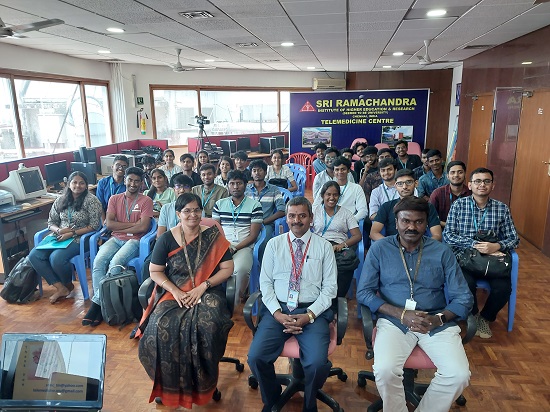
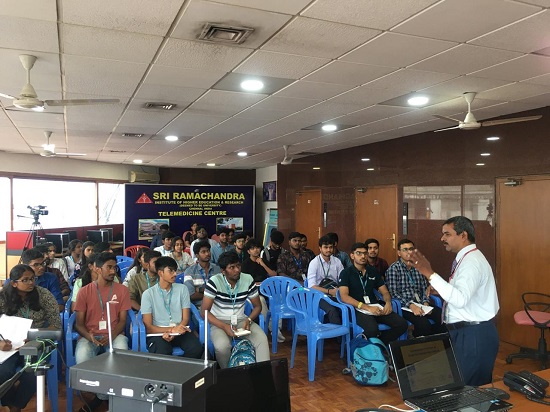
Odisha Chapter organising State level conference
The 12th Annual Conference of The Telemedicine Society of India(TSI), Odisha Chapter( Oditelemedicon 2024) will be organized on 13th April 2024 at IMS & Sum Hospital, Siksha ‘O’Anusandhan Deemed to be University, Bhubaneswar, Odisha 751024. About 150 medical professionals are expected to attend this event.
The theme of the conference is “Digital Health: the next frontier of modern healthcare’. It will be a hybrid event. The scientific event would be consisting of guest lectures, institutional reports, new innovations and the theme symposium.Users from different regions of the country will participate in the conference, some in-person and others over virtual platform to share their experiences and thoughts.
This event is likely to offer an opportunity to healthcare professionals, health administrators, telehealth service providers, engineers, hardware & software developers,students and researchers to listen, interact and share their views.
Telemedicine – News from India & Abroad
AI Smartphone App Ensures Precision in Ear Infection Diagnoses
Scientists have created a novel mobile app utilizing artificial intelligence (AI) for precise diagnosis of ear infections…Readmore
AI-Powered Hearing Aids: A Breakthrough for Hearing Loss
AI-driven hearing devices can revolutionize solutions for individuals with hearing impairment, said experts… Readmore
The Future of Orthodontic Care: AI Revolutionizes Dental Braces
Dental braces have long been a standard treatment for correcting misaligned teeth, but they often come with challenges such as discomfort…..Reademore
AI Reveals Subtypes in Prostate Cancer, Enhancing Treatment
Artificial intelligence successfully detected the emergence of two subtypes within prostate cancer, leading to the identification of two distinct…..Readmore
TSI invites all the TSI Chapters and Members to submit information on their upcoming Webinar or Events (50 words), News related to Telemedicine (200 words) or short articles (500 words) for the monthly e-newsletter.Guidelines for submission to TSI Newsletter-
- Report can be from 500 to 600 words
- Report Should be relevant to Telemedicine or Medical Informatics
- No promotion of self or any product
- Avoid plagiarism
- All references should be included
- Provide any attributions
- Visuals are welcome including video links
- Send full authors name, degrees, affiliations along with a passport sized photograph of good resolution. If multiple authors only main author photo to be sent.
Submission may be sent to – tsigrouptn@gmail.com
Editors reserve the rights for accepting and publishing any submitted material.
Editor in Chief – Dr. Sunil Shroff
Editors – Dr. Senthil Tamilarasan & Dr. Sheila John
Technical Partner- https://www.medindia.net

